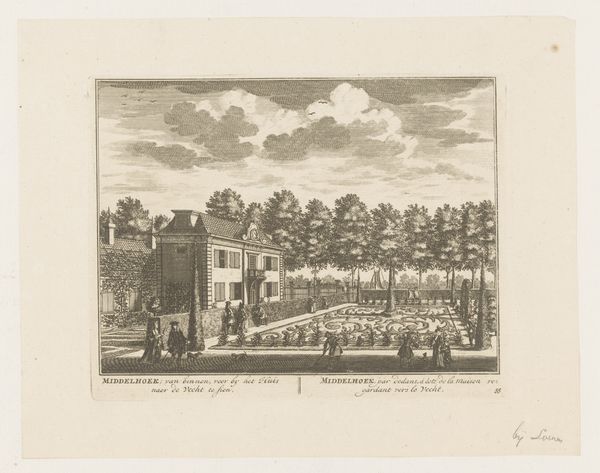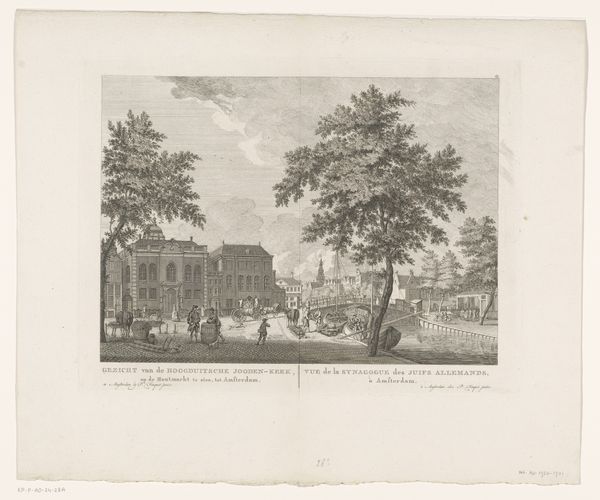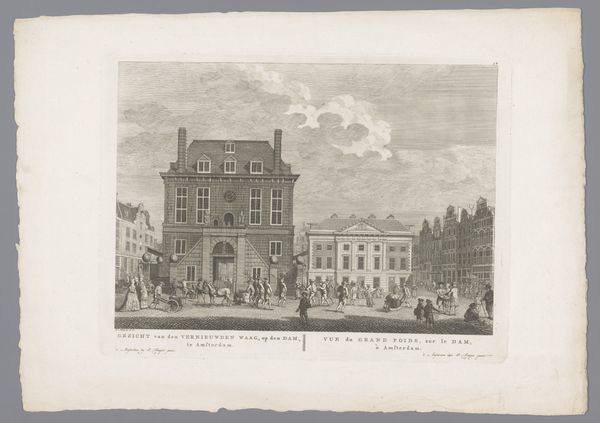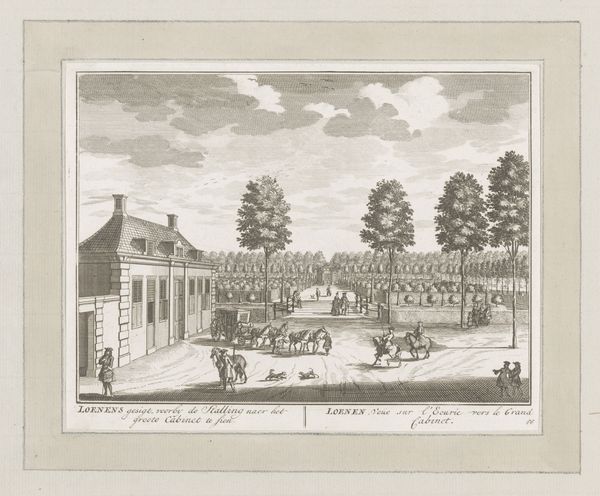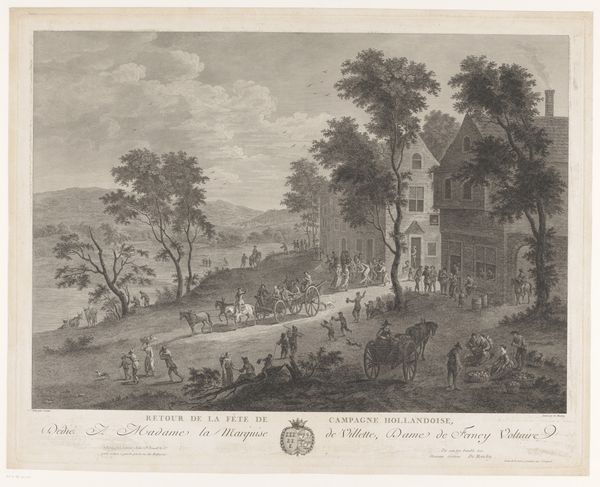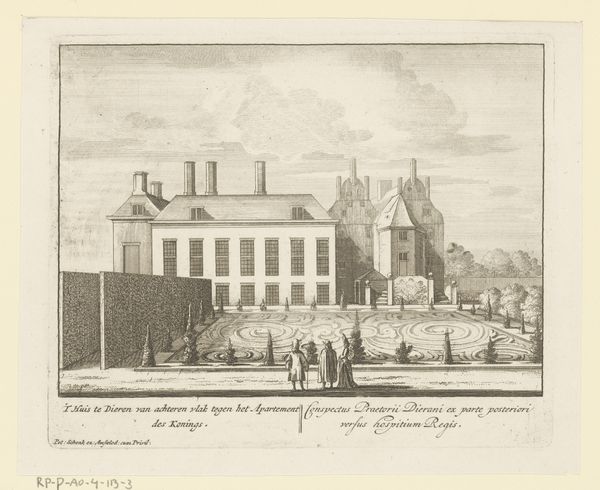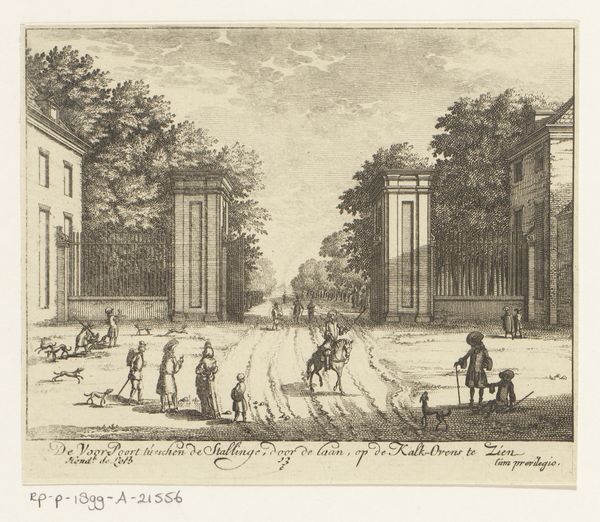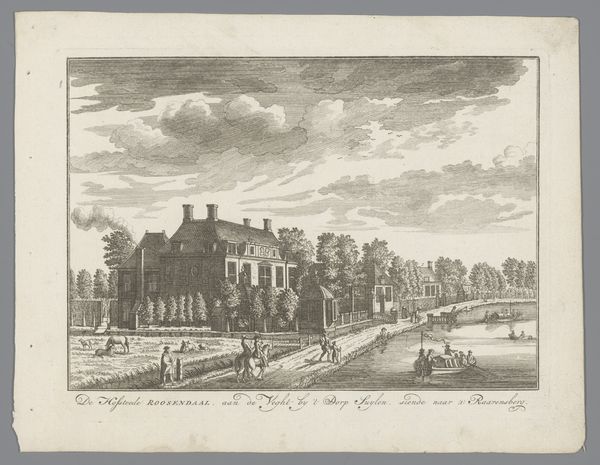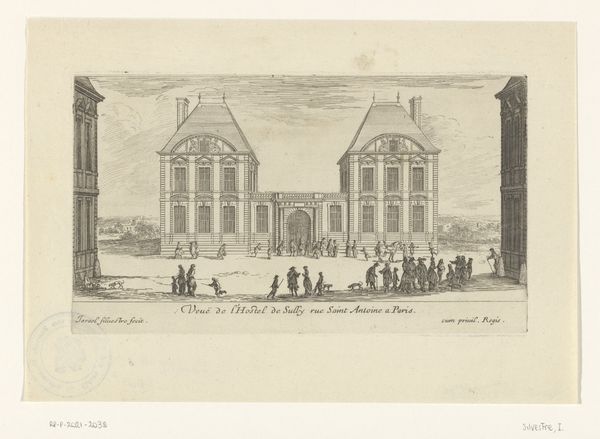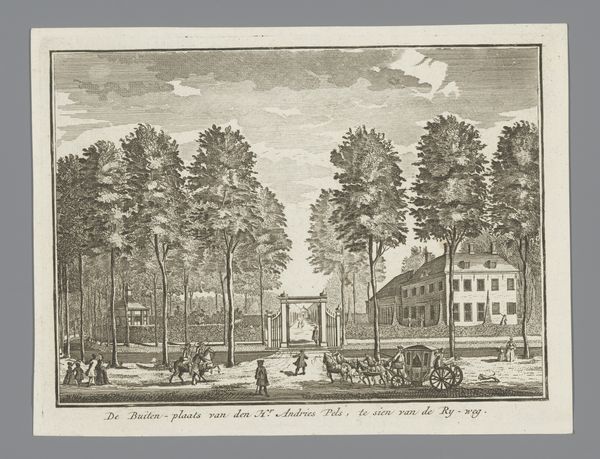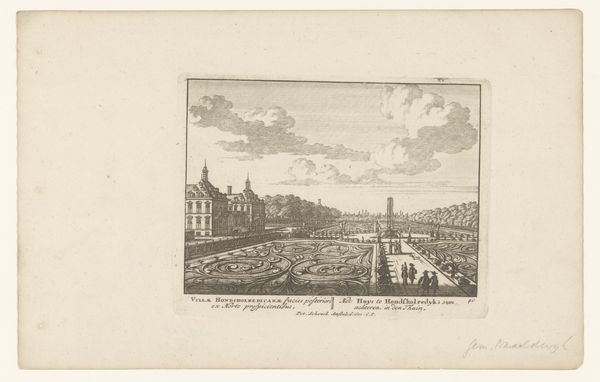
print, engraving
#
dutch-golden-age
# print
#
old engraving style
#
landscape
#
historical photography
#
cityscape
#
engraving
Dimensions: height 129 mm, width 250 mm
Copyright: Rijks Museum: Open Domain
Editor: This print, "Gemeenlandshuis van Rijnland te Halfweg," dates from after 1650 and is attributed to an anonymous artist. It's an engraving depicting a cityscape, currently housed in the Rijksmuseum. I'm struck by the contrast between the building’s imposing geometry and the bustle of everyday life in the foreground. How do you interpret this work formally? Curator: What’s most striking to me is the emphasis on line. Notice how the artist meticulously uses varied densities of etched lines to define the forms—from the rigid architecture to the organic shapes of the trees and figures. The building is presented frontally to give it maximum presence, to then divide and contrast against its environment. Do you see any particular shapes repeated, creating a sort of rhythm? Editor: I notice the repeated rectangular forms, in the windows, the building's facade, and even echoed in the surrounding structures. It feels very deliberate. Does this repetition contribute to the print's overall sense of order and balance? Curator: Precisely! The repetition provides a visual scaffolding that contains the energetic street scene, creating a sophisticated visual game, between structure and action, typical for this period of Dutch art, where the internal formal dynamic becomes central. What do you think of the perspective? Does it create the space, or does it flatten it? Editor: That's a great point. Now that you mention it, the perspective is somewhat flattened. The background and foreground seem compressed, directing my attention to the intricate details rather than creating a deep spatial illusion. Curator: An excellent observation. It’s almost as if the artist intentionally mitigates depth to further accentuate the surface and linear qualities, turning it into an interesting problem to solve and deconstruct. It has certainly provided me with some stimulating things to think about. Editor: I agree, paying closer attention to the line work, the repetition of shape, and flattening of perspective helped reveal subtleties I initially missed, which offers a new angle from which to approach historical landscape.
Comments
No comments
Be the first to comment and join the conversation on the ultimate creative platform.
